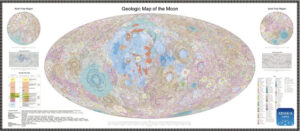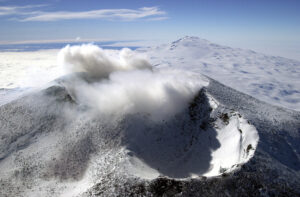On May 31, NASA held its first public meeting as part of a nine-month investigation into UFOs.
Judging by the hundreds of questions — many of them pointedly accusing the agency of hiding extraterrestrial secrets — it’s easy to wonder if NASA scientists are already regretting their decision to tackle this loaded subject.
Some of the event participants called them UFOs (unidentified flying objects). Others called them UAPs (unidentified aerial phenomena). Either way, the questions show that many people believe “the truth is out there” — if only the government would reveal it.
Examples include:
- Has NASA ever lied to the public regarding UFO topics? If so, provide truthful responses for the three most significant lies.
- Has NASA ever cut the live NASA TV feed in order to hide UAP, or any object under its own propulsion? If so, what date/times?
- Are NASA Astronauts under ANY type of NDA or security clearance (or like) restrictions that forbid them from discussing UAP?
NASA officials responded to many of these questions during a live-streamed event on Wednesday. It’s a stark departure from a longtime U.S. government policy of avoiding UFO discussions at all costs.
In October, NASA and the U.S. Department of Defense launched a joint investigation of 800 reports of unexplained sightings in the sky, also referred to as “anomalous phenomena.”
Their conclusion so far? Only a small portion of the database of sightings (about 2-5%) remain unexplained. To make more headway, the investigation will need better quality data, NASA officials said.
Dealing with a mess of data
Since starting their investigation in October, NASA and the DoD have dug through hundreds of UFO sighting info collected over several decades.
In news that shouldn’t surprise anyone. Most of the data is unreliable and difficult to analyze.
The 16-person “study group” includes planetary scientist David Grinspoon, former NASA astronaut Scott Kelly, and science journalist Nadia Drake, the space agency announced in October. It’s chaired by David Spergel, an astrophysicist and president of the nonprofit science organization the Simons Foundation.
The study team’s mission isn’t about making concrete conclusions on the nature of UAPs, but rather to create a foundation for additional research, according to Spergel. That means developing a framework for what a scientific investigation of UFOs will look like, Popular Science reported.
As a result, Wednesday’s meeting included discussions of standards of evidence for evaluating UFOs and the continued difficulty of obtaining reliable reports from witnesses.
Ver esta publicación en Instagram
But the most obvious solution — NASA making its own field observations — might also be the most difficult. Options for that include FAA radar installations, sensors on commercial aircraft, and even government spy installations. The problem, as Sean Kirkpatrick, director of the Department of Defense’s All-domain Anomaly Resolution Office (AARO), put it on Wednesday: Americans don’t like government surveillance.
“Most people, including the government, don’t like it when I point our entire collection apparatus to your backyard,” Kirkpatrick said. “We’ve got to figure out how to do this only in the areas that I can get high confidence there’s going to be something there, and high confidence I’m not going to break any laws.”
Lovers of all things UFO-related can expect NASA to deliver a final report in July.






